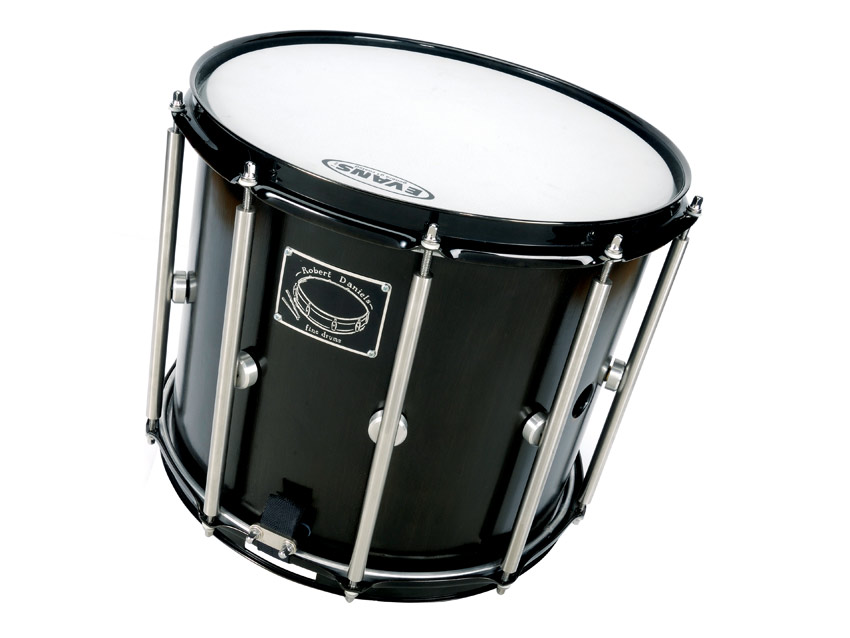MusicRadar Verdict
Unlike usual builders, Daniels isn't trying to make a living from his drums; he's offering a bespoke service to individuals who want something unique. "It's a hobby and an ego trip because I'm making beautiful objects," he freely admits.
Pros
- +
A unique, expertly crafted snare drum.
Cons
- -
This drum was commissioned by a specific customer so might not suit everyone.
MusicRadar's got your back
Lincolnshire craftsman Robert Daniels makes just one or two drums a year. They're all one-offs, usually commissioned by star clients such as Gilson Lavis, Evelyn Glennie, Andy Gangadeen, Eliza Carthy and Johnny Kalsi.
Build
The drum is nominally 14"x12", made up from 40 narrow staves of solid cherry wood, about one inch thick. Robert does everything by hand, using vintage tools. The vertical staves are rub jointed together - "no biscuiting, no dowelling". They are put into a circular mould and planed to fit by eye, so each stave is slightly different, the last stave becoming a locking piece.
Once the glue dries, the shell is sanded smoothly circular inside and out. "It's organic, I don't use chisels, so it ends up undersized, nearer to 13 1/2" diameter," Robert explains. Each bearing edge is a graduated curve, which flutes over to the outer wall. There's a large air hole, roughly 1" in diameter, which is smoothly rounded in the same way.
"Playing a drum this deep is a novel experience… you want to luxuriate in its depth"
The cherry starts out grey, so it's stained using Van Dyke crystals, turning it a dark ruddy brown. The crystals are crushed, burnt walnut shells mixed in with an acrylic furniture varnish resulting in a translucent quality. Beeswax is then applied for sealing.
Solid stainless steel lugs were made by precision engineer Alan Turner. Because the shell is not an exact size, and since the tension bolts must line up precisely with the holes in the cast metal hoops, the single, large central spacers were calculated to bridge the gap once the shell was finished.
A Trick throw-off and Tama Starclassic copper snare wires with brass end-plates complete the job.
Hands On
It's advisable to find a hefty snare stand before grappling with this beast. Playing a drum this deep is a novel experience. Striking the batter you notice a fractional time lag before the snares on the bottom respond. Marching drums this deep often have top head snares and high tensions giving a hard, rattling sound. But that would be a travesty with this superb shell.
Want all the hottest music and gear news, reviews, deals, features and more, direct to your inbox? Sign up here.
You want to luxuriate in the resonance and depth, carve out thick beats of warm and dark timbre.
It's ultra-sensitive - you can play a press roll over those curved edges. There's a healthy ring as you move towards the perimeter, particularly with rim shots. Put your ear to the sound hole, tap the batter and you'll hear a deep growling roar. Tension holds perfectly at the lowest tuning, the drum remaining sensitive with a thick central slugging beat.

Geoff Nicholls is a musician, journalist, author and lecturer based in London. He co-wrote, co-presented and played drums on both series of ‘Rockschool’ for BBC2 in the 1980s. Before that he was a member of original bands signed by Decca, RCA, EMI and more. ‘Rockschool’ led to a parallel career writing articles for many publications, from the Guardian to Mojo, but most notably Rhythm magazine, for which he was the longest serving and most diverse contributor.
